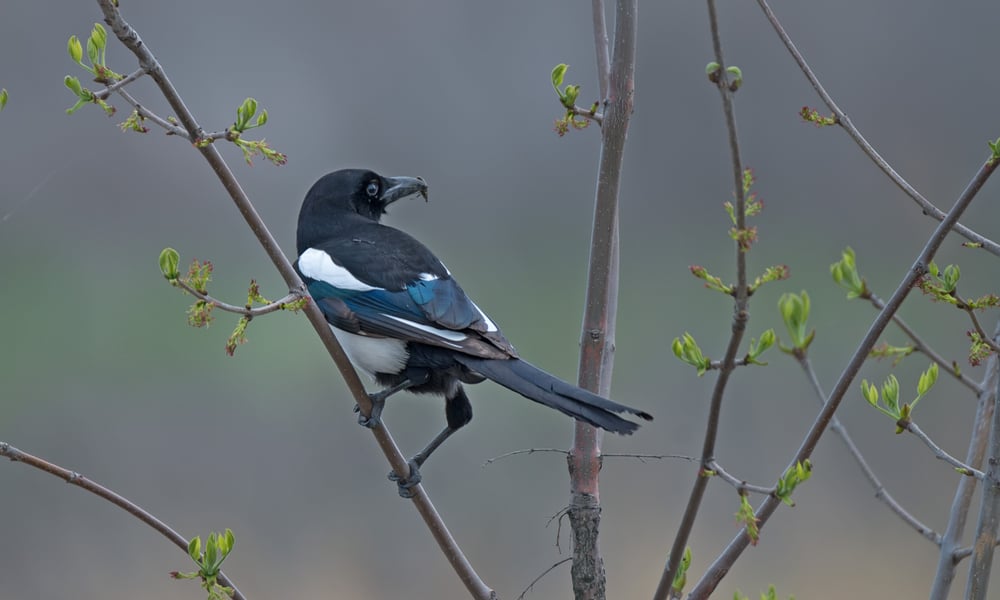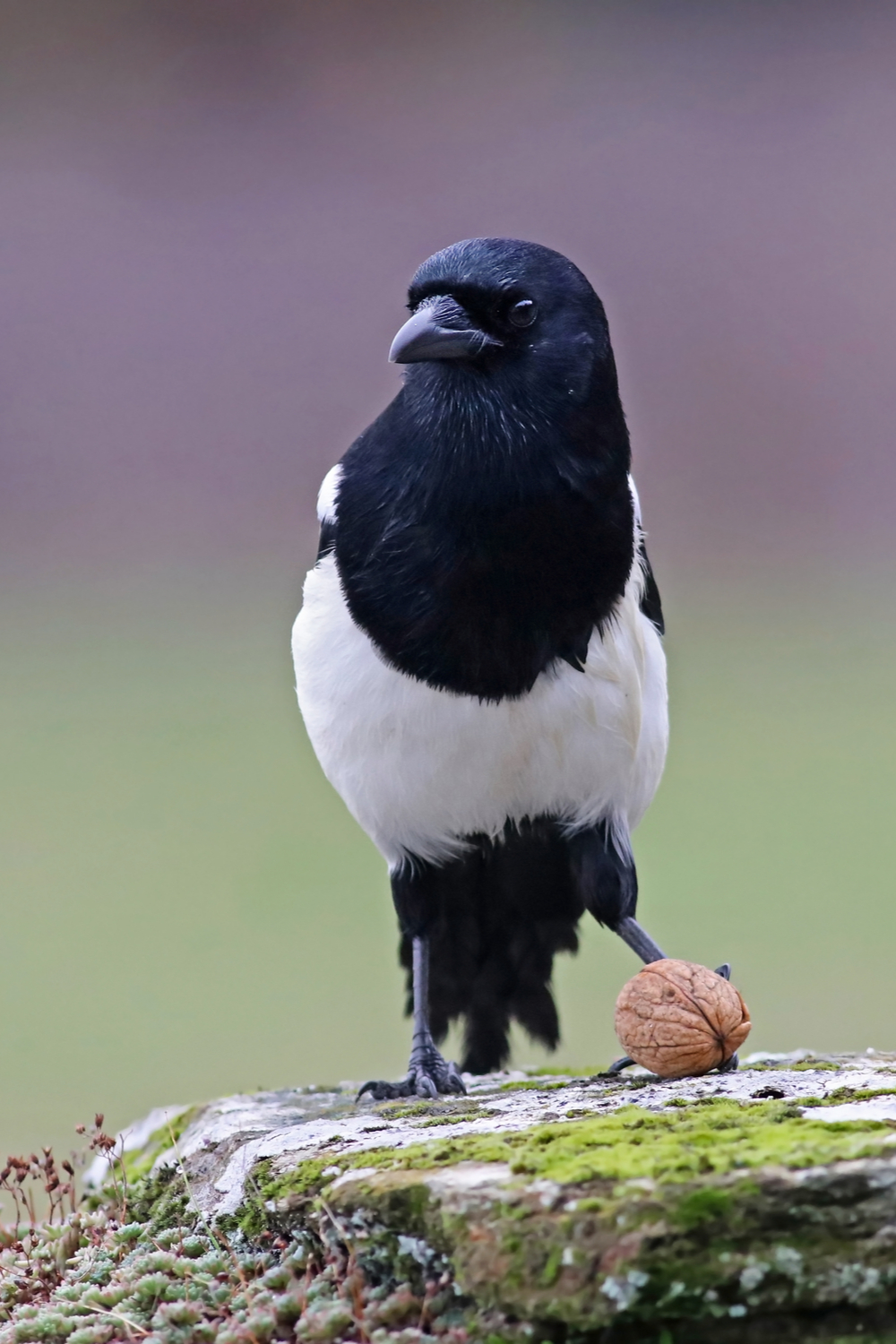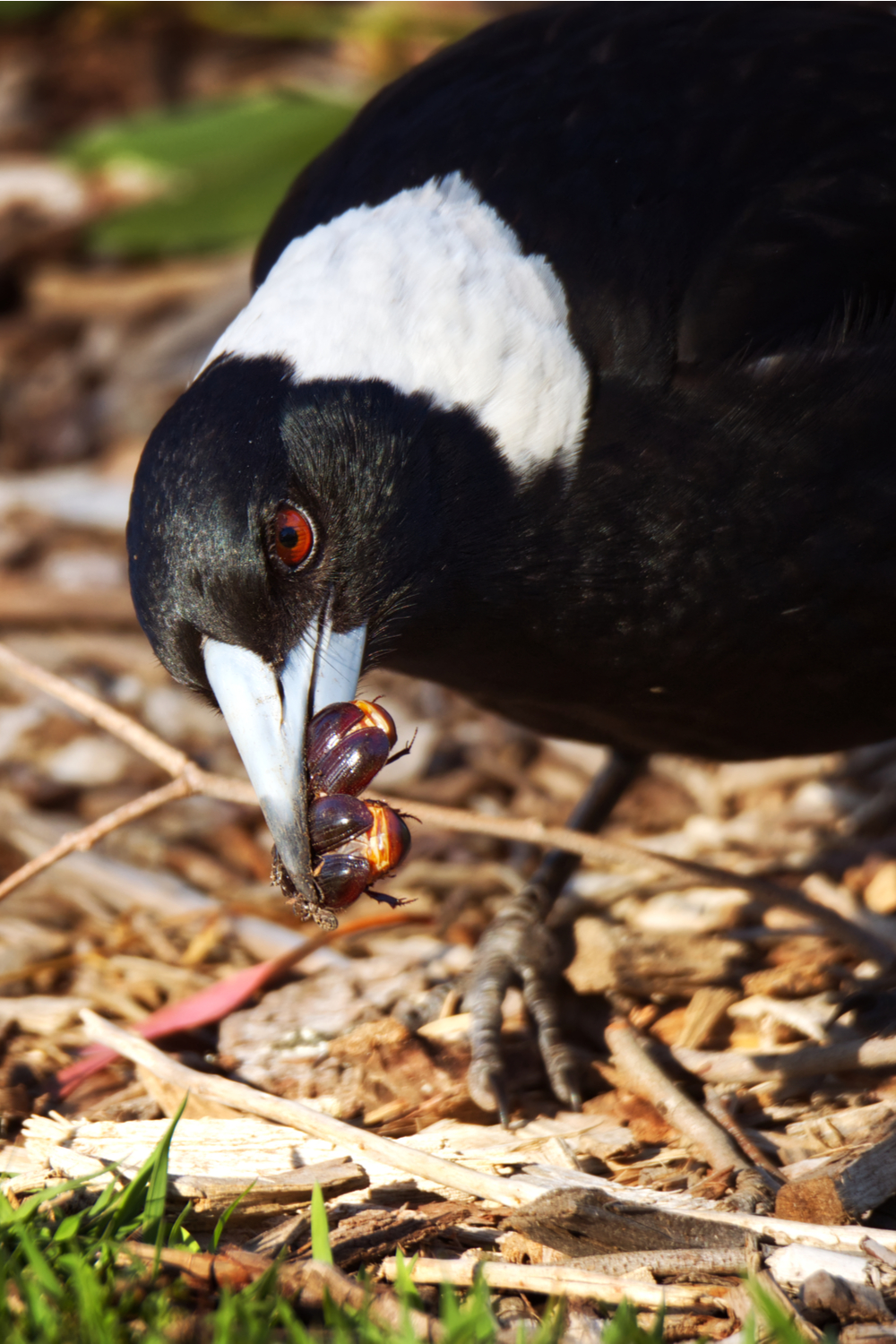If you like birds, you probably want to know what do magpies eat. This is a very common species that live in North America, Europe, and Asia. It is a part of the Corvidae family, and like other species from this group, experts consider it a very smart animal. In fact, the European magpie is considered one of the most intelligent species in the world.
Magpies Habits and biology
Magpies are amazing at singing, and in past centuries, people often kept them as cagebirds. Nowadays, the species is no longer common as a pet.
The bird got its name from old English, from the word “pie” derived from Latin “pica.” Back in the day, people gave birds common names such as robin or jenny wren. The word “pica” was used to describe female craving for all sorts of food. This is one of the magpie’s characteristics as the bird likes to eat various things.
One of the animal’s main physical characteristics is its long tail. It has a specific shape distinguishing magpie from other bird species. Keep in mind that the color and shape of their tail can vary based on specific species. For example, magpies from East and South Asia have tails with vivid blue and green colors.
Here are some of the bird’s common habits:
- Magpies create very sturdy nests, which they place on top of bushes, trees, and hedges. They make them from various twigs and mud but also use plants and roots.
- While both birds create the nest, the male magpie is responsible for gathering materials. The nests are specific because they have a dome above them with a wide opening on one side.
- The egg incubation will last from six to eight weeks. After 25 days, the chicks will leave the nest.
- Magpies belong to the crow family, and due to their intelligence, they have a lot of interesting behavior patterns uncharacteristic for other birds.
- The species is very solitary, even during the breeding season. However, young birds might create their flocks. Occasionally, some older birds might join these flocks during winter.
- Although magpies eat all sorts of things, they tend to hoard food during the time of scarcity.
- These birds are very curious by nature and take lots of interest in their surroundings.
What do magpies eat in the wild?
Experts consider magpies as very opportunities for birds. In terms of their eating habits, they have similar traits as other members of the corvid family, that is, ravens, jays, and crows.
For the most part, the species feeds on insects. However, they don’t mind carrion. As a result, you can often see them near roads and highways eating roadkill. Besides insects, they like various fruits, grains, and smaller mammals. Occasionally, you might see them scouring through garbage cans.
This is not a cannibalistic species, and they rarely hunt other birds. Still, there are instances where magpies eat the eggs of other animals. However, these are rare situations, and eggs make up for a small part of their diet. The bird is mostly carnivorous when it feeds its young, and it mainly eats plants during winter.
Here are the things magpies eat:
- Fruits and grains
- Insects (beetles, grasshoppers, worms, spiders)
- Various rodents (vole, mice, squirrels)
- Eggs
- Carcasses
- Young rabbits
One of the interesting things about the animal is their relationship with humans. Magpies have a love/hate relationship with people, although they often go to them when in need of food. There were records of magpies following American Indians during their bison hunts and eating the carcasses left behind.
Besides going through their trash, magpies have no problem invading human space. For example, they can enter your home, shed, or other parts of your house looking for food. Similar can be said for other species, as magpies often steal food from other animals.
A lot of people like feeding magpies when they come to their backyard. If you decide to do so, you will need to take precautionary measures. Certain raw meats can cause parasitic diseases, some of which can turn to be deadly. Furthermore, all of the food should be small enough so that the animal can ingest it.
The species depends on food high in calcium. This mineral is great for their beaks and bones. Food that is high in nutrients is especially important for young birds and chicks, ensuring proper development. Besides calcium, they require a healthy dose of proteins and vitamins.
17 Facts about magpies
Magpies are amazing birds in so many ways. Due to their high intelligence, it is always interesting watching them interact with each other and nearby humans. Here are some fun facts about these animals:
- A group of magpies is called mischief, tribe, murder, or parliament. Interestingly enough, we use the same phrases to refer to a group of crows. Of course, both animals belong to the same family, so this isn’t particularly surprising.
- You don’t need a lot of magpies to form a flock. It usually refers to a group of birds consisting of a magpie couple and their offspring. Given that these animals have up to six chicks, a flock can have 8 birds. These groups tend to be larger in cold regions, allowing them to roost together during autumn and winter.
- Staying in a flock is crucial for magpies’ survival. It protects the species from predators like owls and hawks. When in flock, the birds can huddle together to chase away attackers from their eggs and chicks.
- As mentioned, magpies are not shy. Besides attacking larger animals and interacting with humans, they have no problem landing on deer, bison, and other large animals to eat insects from their fur.
- In certain parts of the world, people consider magpies as pests. They tend to invade farmlands and eat the crops.
- Although you can find them in various regions, the species require a temperate climate for survival. The birds stick to meadows and grasslands. Although they don’t live in the woods, they stay close to them. Magpies hunt in the open, and when they spot a predator, they retreat to trees seeking shelter.
- Magpies always stay close to fresh sources of water when taking care of chicks. That way, they don’t have to go far to drink.
- Although the bird doesn’t migrate similarly to other species, it will go south of its location during winter. Or, they might seek an area with lower elevation. Still, they never go far from home.
- Most people recognize magpies due to their long, characteristic tails. It is usually as long as their bodies. While you might think that these beautiful tales are important for attracting mates, their main purpose is to evade predators. A long tail allows the species to take sharp turns while flying.
- When taking off or flying, you can see white feathers on their wings. This makes them easily recognizable when they are in the air.
- Magpies sometimes peck away on cattle and sheep. As a result, there were instances throughout history where farmers would gather and hunt down these birds. During one specific Manitoba hunt, a group of people has killed around 2,000 magpies and crows. The US government supported this killing and even paid bounties on killed birds. This led to the enormous killing of magpies in states such as Idaho, where, during one period, people killed about 150,000 animals.
- Although this animal was hunted throughout history, its numbers are relatively high nowadays. For example, in countries such as Ireland and Great Britain, the number of magpies has quadrupled in the last 40 years. The increase is especially noticeable in suburban areas. According to many experts, the population increase is directly connected to an increased amount of roadkill.
- Contrary to popular belief, these birds are not attracted to shiny things. In fact, they might even deter them from stealing grain from farmlands.
- One of the most interesting tidbits about the magpies is that they can recognize their reflection in the mirror. This puts them in the group with bottlenose dolphins, four types of apes, and Asian elephants. During one particular test, the researchers placed collars on their necks after which, they’ve put them in separate cages. By looking at the mirrors, they were trying to get rid of these collars.
- Back in the day, there was a tradition of raising your hat when you saw a magpie. With time, this tradition has slowly died out.
- Like numerous other birds, this is a monogamous species. A couple of magpies will breed every year for the rest of their lives. Throughout their lives, they will live in the same, small territory. In fact, most magpies won’t fly to faraway destinations, nor will they migrate. The only exception is non-breeding birds, who tend to group up.
- Sometimes, you might see long-eared owls taking over old, abandoned magpie nests.
Summary
Magpies have so many interesting qualities. Although they are not good pets, people love interacting with them and watching them. Due to their high intellect, they were often the focal point of various animal studies.
The animal usually sticks to the same territory throughout their lives. They rarely migrate and, when they do so, they stick close to their home.


